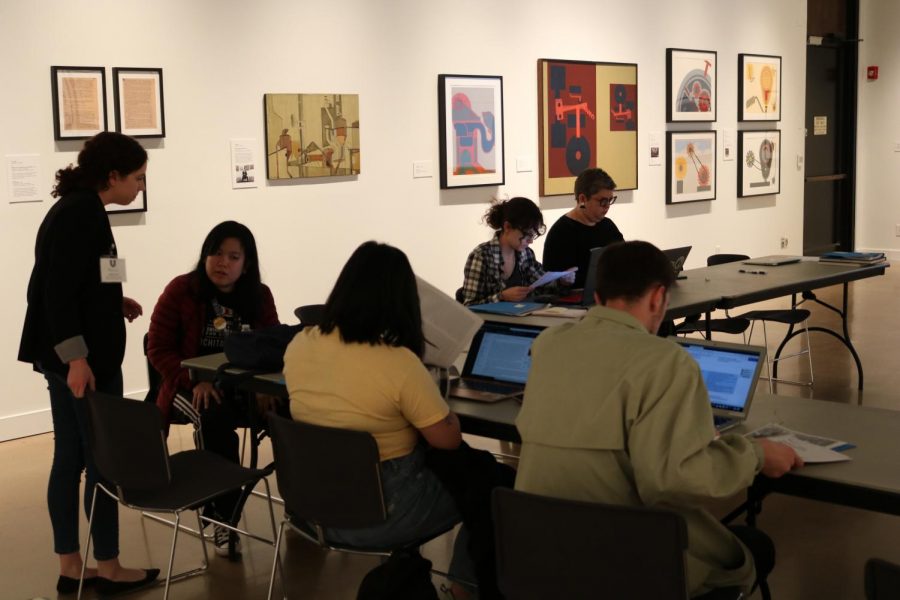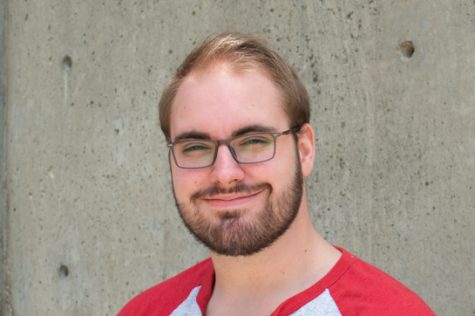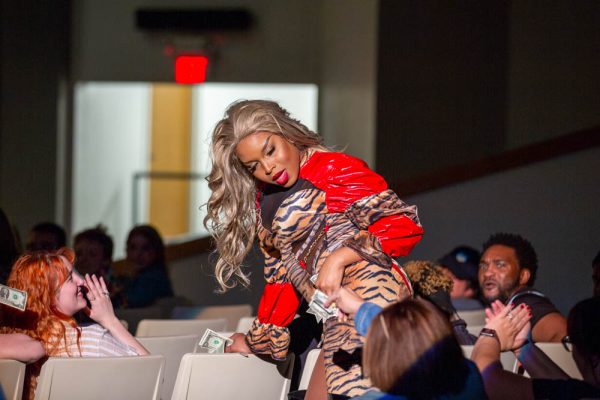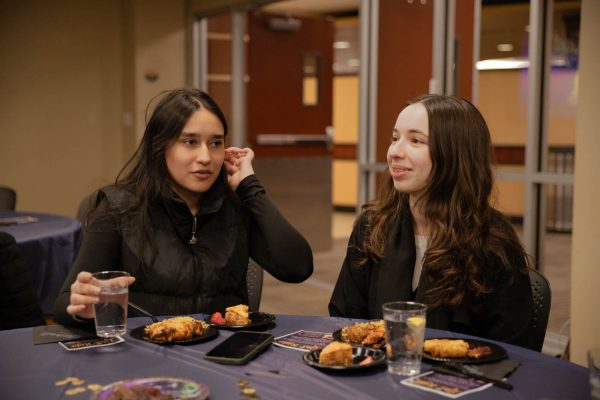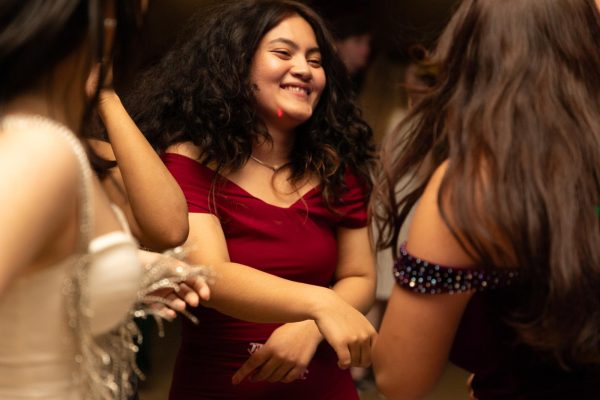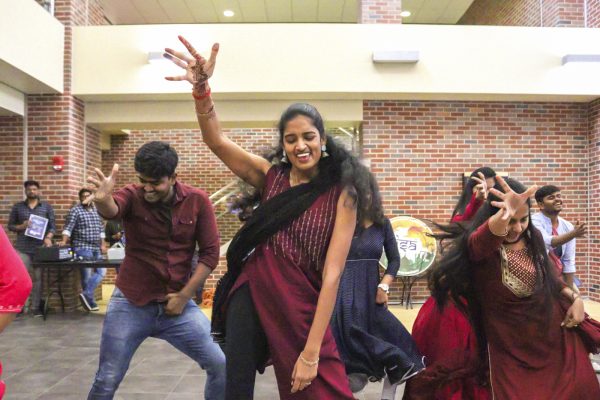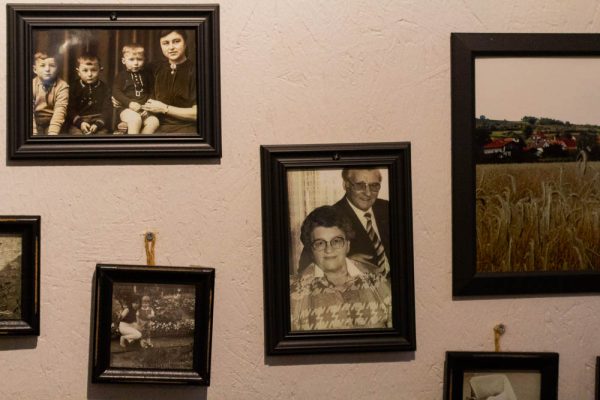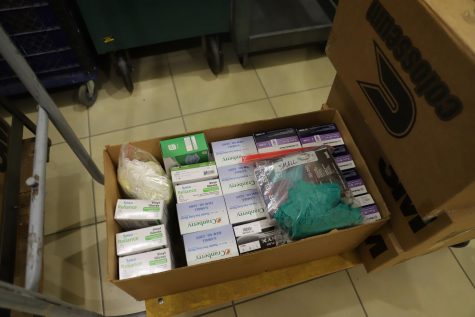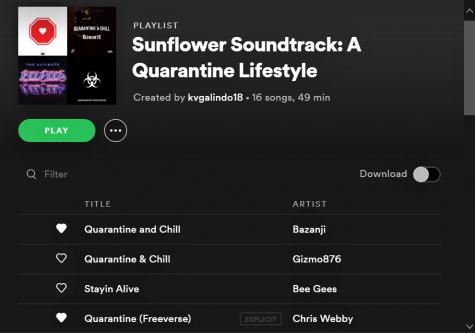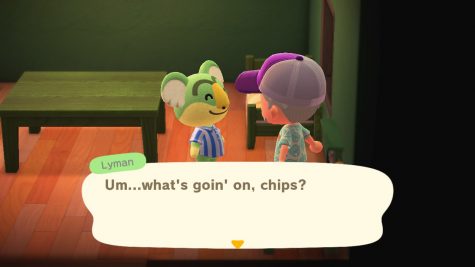Ulrich’s Edit-a-Thon shines light on gender information gap
Volunteers work to fill in gaps of information regarding Art and Feminism at the Ulrich Museum’s Wikipedia Edit-A-Thon on Friday.
Among the artwork of Lee Adler, volunteers on Friday scoured through books and pre-made research folders to curate and expand the ever-growing behemoth of knowledge that is Wikipedia during the Ulrich’s first Edit-a-Thon.
Wikipedia is not as entirely complete as some may think, and Edit-a-Thons are a way for volunteer editors to congregate and fill the gaps of information on certain topics. The Ulrich’s Edit-a-Thon was held in conjunction with Art and Feminism, a nonprofit organization that seeks to address and resolve the gender bias in the online encyclopedia’s catalogue.
“Less than 16% of editors globally are women on Wikipedia, which definitely is reflected in the quantity and quality of articles on women,” said Nellie Elliott, a senior art history major and one of two Ulrich interns who put on the event.
Along with the low number of women editors, only about 18% of the biographies on Wikipedia are about women. This noticeable gender bias on Wikipedia has spurred on groups like Art and Feminism to hold Edit-a-Thons to address that disparity.
“Art and Feminism on their website gave a pretty good example just as far as like, what are typically coined as masculine or feminine topics on Wikipedia,” said Carter Bryant, Elliott’s fellow event organizer and senior art history major.
“Their example was baseball cards — it’s like a long article. However, friendship bracelets, which is typically talked about in a feminine lens, is pretty short,” he continued.
The Edit-a-Thon covered 19 artists — three men and the rest women.
“We only chose artists who already have pages so we could just do what they call minor edits, which is adding citations and updating information,” Elliott said, going on to explain the difficulty of creating new pages for beginner editors.
“A lot of the women in our collection don’t have pages at all,” she said.
Elliot and Bryant themselves are beginner editors who started learning the process when they began organizing the event in January.
With his base knowledge, Bryant said he could teach volunteers basic editing, but “still wouldn’t feel comfortable creating a whole new page.”
The goal of the event was to engage beginning editors, Bryant said.
“The way we structured it was just so we could kind of try and give a pretty comprehensive training to a group of people and then troubleshoot as that goes along with that group if they ran into issues,” he said.
To aid the volunteers, Elliott compiled folders full of research and premade bibliographies, later lamenting that Wikipedia’s guidelines on credible sources made it difficult to create folders for some of the artists.
Ksenya Gurshtein, the Ulrich’s curator of modern and contemporary art, said this is the first of many Edit-a-Thons they plan to host. She said she hopes that by next year, “as they become more confident editors,” they can produce new articles for volunteers to edit and improve.
“I hope that not only will we improve the articles at this exact event, but I hope people will now be able to on their own edit articles and maybe help in that respect,” Elliott said. “Because just giving people the tools I think and the knowledge that there is a gender gap, I hope that that will make a difference outside of this event.”
By the end of the event, 15 articles had been edited, decreasing the Wikipedia gender gap and equipping volunteers with the tools they need to keep editing.




